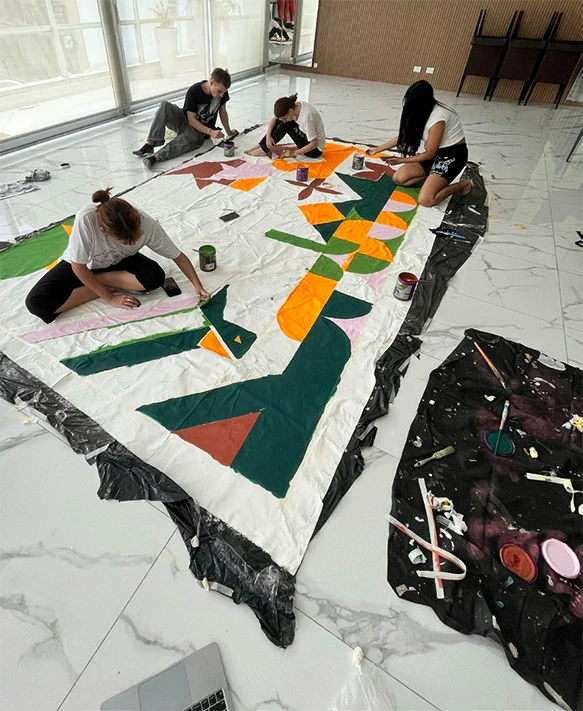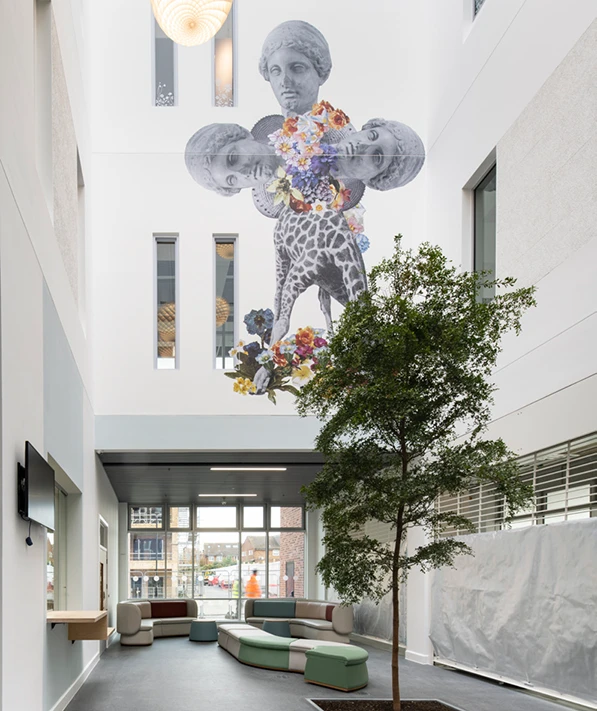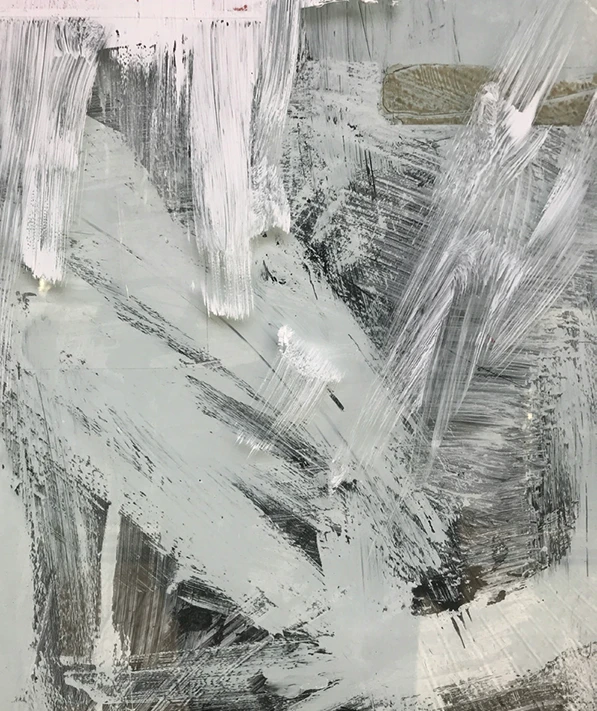Our annual publication, Design with People in Mind, launched this June at the the Design in Mental Health conference 2024 to an enthusiastic reception, with copies flying off the stand. The theme this year is the role of art in creating therapeutic spaces, featuring interviews with practitioners, lived experience artists and activists, as well as the evidence base for the inclusion of art and creative interventions in the design space.
You can download the full publication FREE as a Design in Mental Health Network member on this link
For a taster of the publication, read the introduction below, with credits to the research team Professor Paula Reavey, Bethany Gardner, Professor Steven D. Brown, William Wang
William Morris believed that art must play a vital role in the lives of all people, regardless of social standing and status. Like many Victorian social reformers, Morris believed that art should extend beyond the walls of private and public wealthy establishments and bring comfort, meaning and cheer to all, as well as communicate on social-cultural matters. During the Victorian era, art sometimes extended as far as the large asylums. It is during this time that what is now known as ‘outsider art’ – art made by self-taught individuals distant from the art world – became recognised in the mental health system. Sometimes supported by the institution and at other times improvised with great ingenuity by patients, visual arts such as painting were seen as a ‘window’ into the mental health conditions of patients, whilst music was often used in asylums as a distraction from boredom. But during the twentieth century, outsider art became recognised as an art practice in its own right. The rise of arts-based therapies also recognised the therapeutic potential for the visual language of art to assist in emotional articulation and healing. With the spread of art therapy across the world, we have returned in mental healthcare to Morris’ view of the vital role of art as a critical means through which distressing emotions and personal meanings can be explored, social relations and communities can be facilitated and supported, and lives can be enriched.
This publication is the ninth in the Design with People in Mind booklet series and we are delighted this year to present an evidence review on the topic of art and its role within mental health environments. There is no doubt that art can improve the aesthetic quality of a space, but in this edition, we also ask to what extent can art contribute to the making of a therapeutic space and what evidence is there to support this? We must also acknowledge that art does not just represent the ‘visual’ and here we examine forms of art that include all the senses, including music, drama, textiles for individuals and in groups. Individuals should be invited to participate in forms of art they feel connected to, and above all art should promote wellbeing, feel playful and contribute to a culture of value and belonging. Individuals can still be capable of creativity, connectivity, sociality, and innovation, even in times of distress. We must never assume otherwise.
The key ideas in support of the notion that art enhances wellbeing include a) that art can serve to reduce stress and anxiety, b) that art can create a more welcoming and comforting environment for staff and patients, c) that art can enhance mood and even help manage physical pain, d) that art can heal by fostering a sense of tranquillity and optimism, making patients feel valued and, e) that art can help patients feel connected with one another through collective arts based activities. And yet, these well-known and accepted arguments for the positive role of art require scrutiny if we are to effectively make the case for including art in the design of built environments and in making art central to design decisions.
In this issue, we examine several key issues relating to the role of art in mental health environments. We have trawled the academic literature, but also include extracts from interviews we have conducted exclusively for this publication, with artists, some with lived experience, who work in mental health environments, either to produce works of art or via running art workshops. We have also included an extended feature on Hospital Rooms, the only UK charity whose sole purpose is to sponsor works of artby individuals with lived experience, and to fund comprehensive collective and co-produced arts-based activities with service users. Hospital Rooms operates on principles fully aligned with DIMHN, where individuals with lived experience are at the centre of all decision making; where the aim is to make people feel valued, increase their sense of psychological safety, and put the ‘hospitality’ back into hospitals, as Tim Shaw from Hospital Rooms suggests. Beautiful spaces filled with art are just as important, if not more, for individuals experiencing high levels of distress: Hospital Rooms works with this principle to deliver high quality art works in collaboration with those with lived experience in ways that validate experience and give voice to those who may not have access to conventional modes of communication.
In keeping with all other editions in this series, we wish to emphasise the importance of the relationship between environments and people; that treatments and interventions are shaped and emerge within the spaces in which they operate. If treatments are delivered in spaces that do not communicate value or hospitality, creativity or even beauty, they can fail to create a sense of belonging, foster a positive identity and isolate service users and staff from one another. Here, we examine how art is not solely an aesthetic matter, but an active channel serving to collectivise individuals, to nurture group activity and a sense of shared experience, which we recognise as increasing a sense of belonging and identity.
The Jameel Arts & Health Lab, in collaboration with the World Health Organization (WHO) has fostered connections with artists and scientists across the globe, to enable a full integration of arts in healthcare services, with a specific focus on over-looked and underserved communities. The launch of the lab in 2023 features the beginnings of a range of projects relevant to mental health. Such projects will no doubt generate high-quality evidence that strengthens existing claims (see Fancourt & Finn, 2019) linking art with positive (mental) health outcomes, to inform future policy and practice.
Our vision, as always, is for the evidence we present here to be put to good use and benefit those who live and work in mental health care environments, both in formal services and in the wider community.











